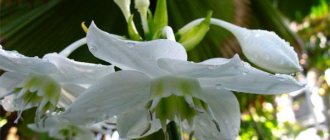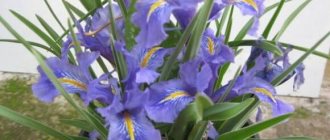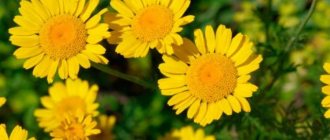Water lilies, water lilies or nymphs, are a plant with floating lobed leaves and showy flowers. The water lily adds a magical ingredient to any body of water. The Latin name nymphaea comes from the Greek word nymphe, meaning water spirit, which is exactly what this wonderful plant is. Long, elastic stems rise to the surface of the water from fleshy rhizomes buried in the sediment. Can be grown in a yard bathtub or in any size pond. They grow from tubers planted in pots underwater and emerge with rounded leaves and star-shaped flowers that float on the surface of the water. The leaves are fairly round in shape (10 to 30 cm in diameter) with a narrow circular cut (or axil) cutting the circle between the two (often overlapping) petals. The notch between the petals extends to the stem on the underside of the leaf. The lobes are straight or sharply pointed, with tips that gently flare outward. The tops of the leaves are leathery and green; the underside is reddish-purple. The strongly scented flowers are large (7 to 20 cm in diameter), with numerous white petals arranged in a circular cluster around a thin cluster of yellow stamens. Flowers are produced on individual flower stalks arising directly from the rhizome.
Caring for a nymph
Proper care of water lilies starts with location. These plants will require a minimum of 6 hours of sun each day. Most of them bloom during the day when the sun is high and close in the evening when the sun sets and the air cools.
Water lilies are fairly hardy plants and easy to care for, making them a good choice for beginning gardeners. Nympheas are diurnal plants, they bloom in the morning and close their petals after sunset, flowering for three or four days before sinking below the surface of the water. Flowers are produced from spring to fall, blooming in all colors except blue and purple. Hardy water lilies are dormant in winter; they can be left in the water if the pond does not freeze to the bottom.
Tropical water lilies, which bloom in more exotic hues, require a little more care, but are worth it. Their flowers are larger and more prolific and do not close even at night. Night varieties have bright, almost electric colors. Tropical water lilies require water temperatures above 21 degrees Celsius and the tubers must be removed from the pond for the winter.
How to choose a water lily
Water lily (lat. Nymphaea), popularly known as the overpowering grass, can become a natural decoration of any reservoir and artificial pond. In nature, the plant is represented by many varieties that differ from each other:
- color (all shades of white, cream, yellow, purple, blue);
- texture of the petals (smooth or terry to the touch);
- time of active flowering;
- shape (star-shaped or cup-shaped);
- size (large, medium, small, dwarf).
Also, when choosing a plant, you should pay attention to frost resistance. Tropical lilies react acutely to lack of sun and temperatures below zero Celsius. Therefore, only frost-resistant varieties are suitable for central Russia, the most popular of which are Alba, Marliaka Korneya, and Black Princess.
A water lily in a container can be immediately placed in a pond
You should purchase already sprouted lilies in small containers. The flower must be healthy, uniform in color, without a putrid odor. The container should have a label with the plant's specifications in Latin and growing recommendations.
How to plant water lilies
Regardless of whether you plant the nymph in a container or in a pond, the planting technique will be the same. If you are new to water lilies or are short on space, try growing them in a container. Any type of water lily can be grown in pots because they only grow to the size of the container they are in.
In the wild, some species of nymphea can be invasive and compete with native plants.
- Container selection. Choose a container that is wide and shallow. The ideal size is 36-54 cm wide and 18-30 cm deep, as the nymphea tuber grows horizontally. But soil that washes out of the container through the holes can contaminate the pond water.
- Soil for nymphs. Use heavy soil designed for garden use, not fluffy potting soil that will easily wash out of the container. Avoid mixing soil with perlite, vermiculite or peat for the same reason. Work them into the soil before planting. Water lilies are plants that need fertilizer. Although they get most of the nutrients they need from the surrounding water, you can also feed them a special slow-release aquatic plant food placed in compost.
- Plant cleaning. Remove old leaves and thick, fleshy old roots so that most of the plant's energy will go into growing new roots, leaves, stems and flowers. Leave only young leaves and buds and hair-like roots.
- We plant tubers. Plant the tuber in the pot with the growing tip pointing up and about 45 degrees toward the center of the pot. Cover the bottom with a layer of rocks or pea gravel to keep the soil in the pot. The pot should be lowered into the pond at an angle so that air can escape. Set the base of the pot 45-50cm deep. The leaves will float to the surface. If the pond is deeper than 50 cm and does not have built-in planting ledges, place something under the pot.
Nympheas - description and characteristics of the plant
A white water lily in a pond is a classic decoration for ponds in parks and recreation areas, as well as in home areas. This is a perennial plant of the Water Lily family, which has a huge number of varieties. It has round, bright green leaves that can reach up to 40 cm in diameter and complex, symmetrical flowers. They can be painted in any shade, but in nature the white water lily is more common.
Pond nymphs must meet several characteristics, which are important to pay attention to when purchasing:
- frost resistance - some exotic varieties do not tolerate wintering, but they can be grown in containers and hidden in a warm room from low temperatures;
- root length - selected in accordance with the depth of the pond, the rhizome of a water lily can reach from 20 to 100 cm or more;
- high-quality planting material - for landscaping a pond, it is recommended to select a ready-made plant, since growing from seeds will be more labor-intensive.
The period when water lilies bloom on the pond lasts from July to September. However, the lifespan of one flower is no more than 4 days.
How to prepare water lilies for winter
Start preparing your water lilies for winter by removing any dead or dying leaves. If the pond freezes in your climate or is drained for the winter, take out the potted lily. Store the pot by keeping it cool and moist in a plastic bag. If you cannot store your lily in a pot, remove and clean the growing tuber and store it in peat moss at 5 to 10 degrees Celsius.
If the pond does not freeze, do not remove the pot. Just lower it into the deepest part of the pond, where the water will definitely not freeze. In the spring, return the pot to the desired growth level in the pond. If you have dug up and saved the tuber, replant it as if it were a new plant.
Keeping your pond clean
Don't overload your plants with fertilizer, which will feed the algae that turns your pond water green. Do not immerse fertilizers directly into the water, this can change the pH of the water and harm plants and fish. Fertilize your lilies once a month by removing the container and adding fertilizer at the root. Tropical water lilies require more fertilizer and should be fed generously throughout the growing season.
Diseases and pests of lilies - protection and prevention
A water lily will grow and develop well, planting and caring for which includes protection from diseases and parasites. Treatment is complicated by the constant presence of the plant in water, so if the slightest signs of disease appear, the flower must be removed from the pond.
It is worth considering that the use of chemicals to protect against infection will lead to water poisoning and the death of other pond inhabitants. If it is impossible to transfer the plant to land, use only safe biological agents.
Aphid (lat. Aphidoidea)
Detected insects are collected manually or washed off with a stream of water. Biological method: raising ladybugs that feed on aphids.
Aphids do not harm the lily, but spoil the appearance and spread diseases
You can use an infusion of horsetail (0.5 kg of herb is poured into 5 liters of water and left to infuse for 24 hours). The infusion, strained and diluted with water (1:4), is sprayed twice a day for 7 days in a row until the insects disappear.
To quickly get rid of the parasite, use Agravertin, Fitoferm, or Inta-Vir.
Leaf beetle (lat. Lilioceris lilii)
This parasite is also called the pitcher bug. Sign: oval holes on the leaves. Control method: collecting pests by hand and immersing the plant in water for 5 days so that all previously uncollected insects die.
Swamp moth (lat. Ostrinia palustralis)
Sign: oblong holes, the insect is on the back side of the leaf. Collecting larvae and adults by hand helps. Biological method: introduction of water spider and smoothie.
Lilies are rarely affected by diseases, and most often they are all associated with hypothermia, or improper care of plants. Let's look at the most common of them.
Lily leaf spot (lat. Phyllosticta)
A fungal disease that appears on the leaf plate in the form of spots of different colors. Only treatment with foundationazole or 1% Bordeaux mixture helps, as well as the destruction of already damaged parts of the plant.
Lily spotting is a very common disease.
Black root rot (lat. Rhizoctonia)
A fungal disease known as Rhizoctoniasis. It affects the roots, which begin to smell bad, turn black, and the leaf blades turn yellow. In advanced cases, the lily dies.
The plant must be dug out of the pond and kept in a solution of a special product, according to the instructions.
The water lily is kept in quarantine for about a month. You can return the flower back if all signs of the disease have disappeared and do not appear. If no change for the better is observed, the plant is destroyed.
Reproduction of nymphs
If necessary, you can divide your water lilies every 4-6 years, depending on their vigor. Remove the plant from the water in late spring or early summer. You will see a thick, fleshy crown with smaller rhizomes coming out of it. Cut off these small rhizomes with a clean, sharp knife. Collect rhizomes in water-based planting compost in planting boxes, inserting them vertically just below the surface of the compost, with the fibrous roots underneath. Cover the compost with washed pea pebbles.
Possible problems
When water lilies grow too thickly above the surface of the water, they interfere with oxygen exchange. Large cushions trap heat in the water, leading to algae blooms and stagnation. Stagnant water is the main habitat for mosquitoes.
Control
Although it is not easy to eliminate, you can slow the spread by pulling plants up by the roots. In shallow water, dig deep enough to pull out as many roots as possible. Continue cleaning the pond annually until the water lilies are gone or at least thinned out.
Water lily: care, cultivation and reproduction
Water lilies can be propagated both by parts of roots and by seeds, but in mid-latitude conditions the second method of garden varieties and their hybrid forms is not relevant. This is due to the low survival rate during seed cultivation, as well as the high risk of obtaining not a varietal, but a wild plant.
Preparing the site and planting container
The separated lily rhizome is planted in a low container, larger in width than the future sprout. The ideal option for growing is a vegetable box. Most often, gardeners prefer to buy ready-made plastic containers for lilies.
Drainage holes are made at the bottom of the box. If the container is large-mesh, then put burlap on the bottom. Preference is given to boxes of dark colors, which are hardly noticeable from the shore, so that the appearance of the pond is identical to the natural one.
Vegetable box for growing lilies
Coarse sand, old compost or garden soil can be used as soil. Peat is not added to the soil mixture to avoid blooming and algae growth.
Requirements for the landing site (pond):
- Still water;
- depth of at least 30 cm (for dwarf varieties - 20 cm);
- good lighting;
- silty soil (possibly silting with special purchased soil).
In large ponds that freeze to depth, flowers are planted in containers for ease of transportation for the winter. In small shallow reservoirs - directly to the bottom.
Reproduction and planting of nymphs
The best time to divide the root system is late spring and early autumn. For propagation, a piece of rhizome (on average 50-60 cm) with a bud is suitable, which is cut off at the 5-6th year of the plant’s life.
The separated root is planted in a low container to a depth of half a meter. In nature, the planting depth of lilies is from one to two meters.
Planting water lilies in prepared soil
Planting is carried out on the day of separation from the mother root. During the process of planting, the lily rhizomes are laid with cord-like shoots down and covered with soil so that the plant does not float up. It is worth considering that excessive deepening of the growing point will have a negative effect, so part of the rhizome should protrude above the ground.
The roots are secured with wire, crushed stone or stones. This is necessary to prevent the plant from floating. The lifespan of a water lily is up to 9 years.
The roots of the lily must be fixed so that it does not float up
For fertilizer, bone meal is used, mixed with clay, and rolled into balls, which are placed under the rhizome of the flower.
Types of nymphs most suitable for home ponds
Nymphaea exists with leaves in many colors from pure green to various shades of brown or red. Aquariums use a number of selected hybrids that are most suitable for this purpose. Species commonly found in stores include Nymphaea pubescens and Nymphaea micrantha, which have brown leaves and with their color and shape offer an attractive contrast to other plants. A species that can be recommended for its decorative effect with spotted leaves is Nymphaea lotus, and this species is also usually always available in trade. There is one species found growing wild in Northern Europe, Nymphaea alba (White Water Lily). This type is very suitable for garden ponds, but requires quite a lot of space. However, there are several hybrids that are frost hardy and some require less space so they are better suited to smaller ponds.
Join our Facebook group
Winter storage of nymphs and whether it can be propagated by seeds
In natural reservoirs, where the water freezes more than a meter deep, water lilies sink to the unfrozen bottom and survive the winter there excellently.
In garden plots there are rarely ponds deeper than one meter, so you should remove the plant from the pond and place it in containers with water for the winter, and store it in a basement or cellar. At the beginning of spring, when the ice has completely melted, containers with nymphs are placed in their usual places. Propagation by seeds is carried out in order to select new varieties or improve the quality of existing species. The purchased seeds are planted in small pots and lowered into water to a shallow depth. Vegetation from seeds occurs over a long period and is possible under natural conditions only in southern latitudes.
Planting a nymph
A convenient and common method of propagating nymphs is simply dividing the powerful rhizome of an adult plant into several roots with one or two buds. The separated roots are placed in new containers with ordinary muddy soil and weighted down with pebbles on top.
Anyone knows what a water lily looks like. And he immediately imagines a white, large flower on the water. But selection and even natural pollination have given us many types of water lilies of various colors: from white-yellow to dark red. Due to the fact that water lilies bloom in the warm season, some consider them to be heat-loving. But there are also winter-hardy varieties that can withstand extremely low temperatures. So let's figure out how to plant a nymph in yours.
Rules and terms of disembarkation
Water lilies should be planted in a pond that is located in an open area, well lit and warmed by the sun, because Almost all species do not tolerate shade.
If there is no pond yet and its construction is only in the plans, then when designing you should immediately decide on the place where the water lilies will grow. The reservoir should have at least three zones. It is better to make the bottom topography a cascade. The depth for normal growth of water lilies should be 50-80 cm, and for winter-hardy varieties - 100 cm. To quickly awaken after wintering, baskets with plants are moved to a depth of 25-30 cm, because there the water will warm up faster.
The further growth and development of water lilies will depend on the correctness of planting work. To plant the plant you will need a low, wide container with holes for drainage. This will help the root system grow and reproduce better. For dwarf and small flower varieties, small buckets are suitable. If medium and large varieties are planted, then take a container of at least 12 liters, or even more.
The second step is to prepare the soil. Its composition consists of wet clay, without admixtures of sand and clods, garden soil, with the addition of peat and burnt cow manure, taken in equal proportions. All components are mixed well and placed at the bottom of the container.
During planting, the roots are laid out horizontally, pointing them down, sprinkled with earth and compacted. So that the root can grow freely, its edge, located opposite the growing bud, is placed near the wall of the basket.
You can prevent the soil from being washed away by water if you pour a layer of clean sand on top of it and lay out small stones or pebbles.
Water lilies are planted in the pond in May-June. If it is possible to add water to the pond, then it is better to plant water lilies in this way. In the first few days, the standing water level is increased by several centimeters. After a week, the volume of water is adjusted to the desired level.
Planting young water lilies in a container with soil
Capsule as a medicinal plant
All parts of this plant have medicinal properties:
- The flowers were used to treat rheumatism, they also treated gout and were taken as a sleeping pill.
- Compresses made from the leaves were used to treat severe headaches, erysipelas and burns.
A compress from the leaves of the egg capsule is made for severe headaches.
- Infusions from the rhizome were taken for stomach pain, coughing, and relief from toothache. Beauties washed their hair with such infusions so that there would be no dandruff, and their hair would grow strong and healthy.
- The water lily was used as an antipyretic, as medicinal decoctions and infusions for the treatment of skin diseases, and it was used to treat the genitourinary tract.
Here are just a few recipes that have come down to us from our ancestors:
- 2-3 tbsp. Brew spoons of water lily flowers with 1 cup of boiling water, wrap in gauze and apply to sore spots for gout or rheumatism;
- 1 tbsp. a spoonful of flowers is brewed in 0.5 liters of boiling water and taken 1 tbsp at night. spoon as a sedative and hypnotic;
- 1 tbsp. pour a spoonful of chopped rhizome with 1 cup of boiling water, cool and take 1 tbsp 3 times a day. spoon for stomach pain;
- Pour 2 tablespoons of crushed and dried flowers into 1 liter of boiling water. Boil it all for 10 minutes. over low heat, leave for 1 hour, squeeze and use as a compress as a wound healing agent.
All parts of the water lily have healing properties, but they are also poisonous.
Therefore, decoctions and infusions should be prepared at home with extreme caution. Otherwise, instead of a positive effect, drowsiness, lethargy, vomiting, diarrhea and general malaise may occur.
All medications made from yellow water lily raw materials are prohibited for hypotensive patients, as this plant lowers blood pressure.










